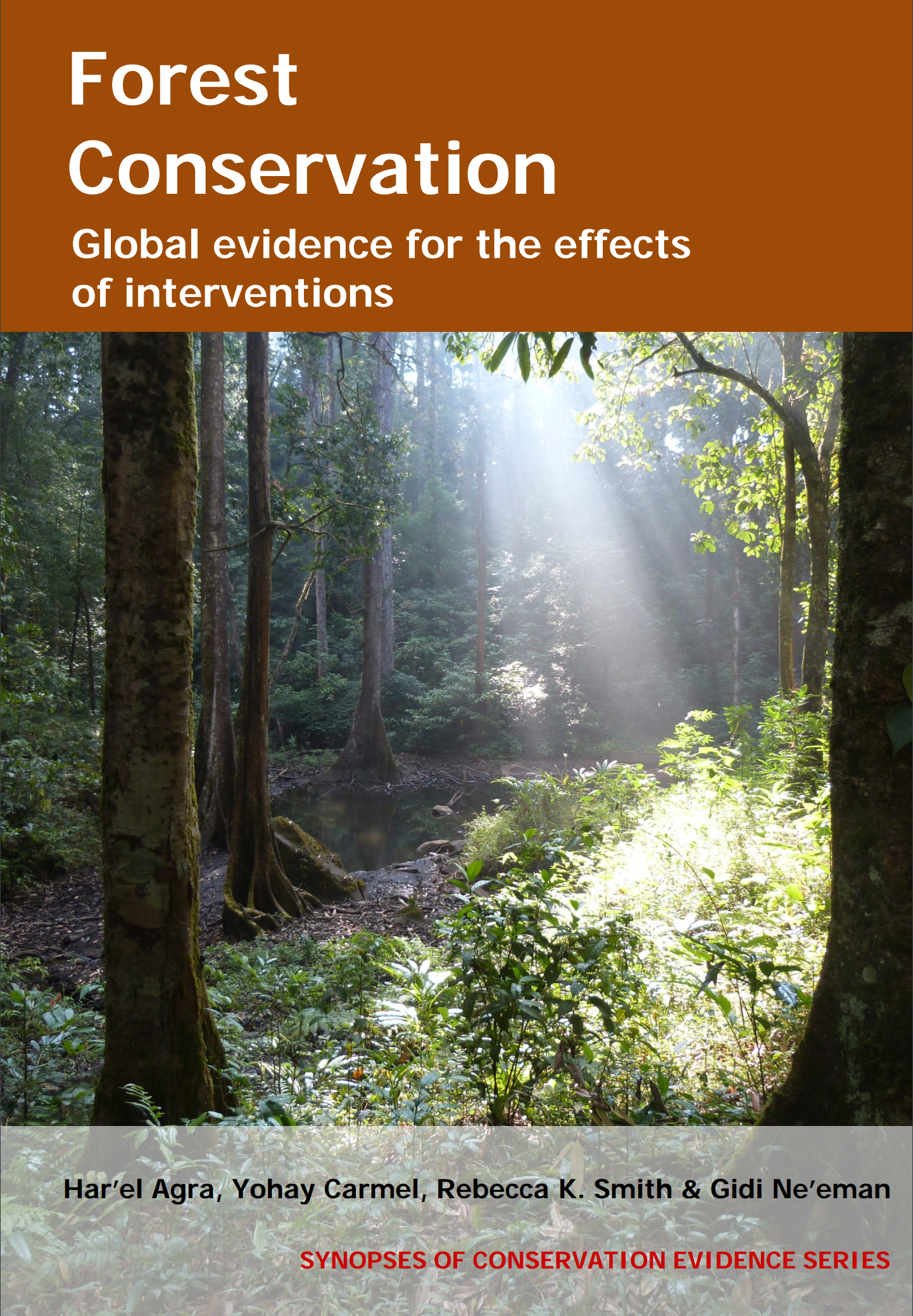Reduce the intensity of livestock grazing in forests
-
Overall effectiveness category Unknown effectiveness (limited evidence)
-
Number of studies: 2
View assessment score
Hide assessment score
How is the evidence assessed?
-
Effectiveness
78% -
Certainty
34% -
Harms
0%
Study locations
Supporting evidence from individual studies
A replicated study in 1986-1993 in temperate woodland in the UK (Hester, Mitchell & Kirby 1996) found that reducing the intensity of sheep grazing increased the numbers of tree saplings. The number of saplings/100 m2 was higher in low-intensity (0.54-0.66) than in high- and medium-intensity grazing plots. Four plots for each grazing intensity: high (2.1-3.8 sheep/ha); medium (1.2-2.0 sheep/ha) or low (0.6-1.2 sheep/ha) were established in 1986. Saplings (>30 cm diameter at breast height) were monitored in 2003 in 20 quadrats (10 × 10 m) within each plot.
Study and other actions testedA replicated, randomized, controlled study in 1991-2005 in a Mediterranean oak forest in central Macedonia, Greece (Ainalis, Platis & Meliadis 2010) found that reducing grazing intensity increased understory plant biomass . Understory production (kg/ha dry matter) was higher in non- and lightly-grazed (~4,500) than in moderately-grazed (~2,800) and heavily-grazed sites (~1,000). A study area of 2,000 ha was divided into six forest segments, each was divided into three areas with different stocking densities (goats and cattle): heavy (15 animals/ha), moderate (5 animals/ha) and light (0.2 animals/ha). Sixty plots (1 m2) were randomly placed in every grazing treatment in all stands and protected from grazing at the end of 2004. Similar size plots with grazing close to protected (control) plots were sampled for comparison. Overall understory (herbage and browse) production was measured in 1991 and in September 2005.
Study and other actions tested
Where has this evidence come from?
List of journals searched by synopsis
All the journals searched for all synopses
This Action forms part of the Action Synopsis:
Forest Conservation
Forest Conservation - Published 2016
Forest synopsis





)_2023.JPG)














